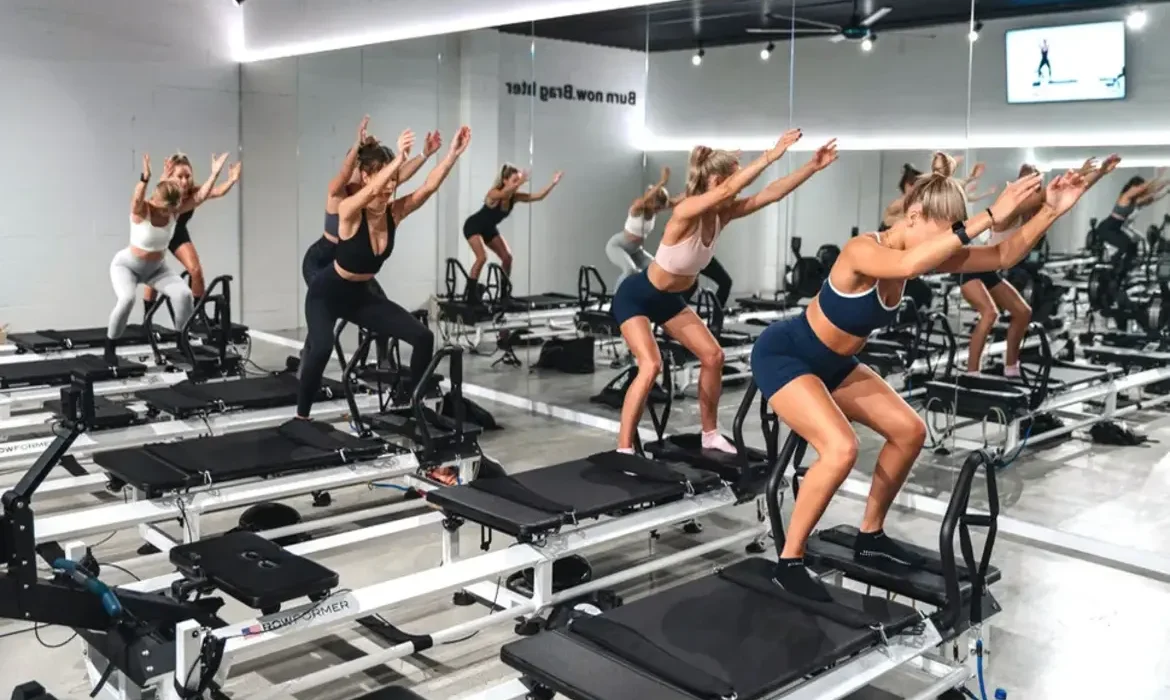How Profitable is a Pilates Studio?

The Pilates industry is showing significant growth, driven by increased fitness awareness, making it an opportunity for the new ones. Before starting a Pilates Studio, it’s very important to understand, how profitable is a Pilates studio? Understanding the factors including productivity, ROI, customer base, and operational expenses will help to decide if opening a Pilates studio is right for you.
In this guide, we will explore how to start a Pilates studio, business operations, strategies, and guide to enhance your revenues.
Are Pilates Studios Profitable? Analyzing Revenue Potential
If you are considering, are Pilates studios profitable? Of course, Pilate Studio is a profitable venture in the business world. However like other businesses, pricing, operational costs, consumer insights, and other factors. An organized studio with a strong reputation and a huge customer base can generate significant profit.
Key Factors Influencing Pilates Studio Profitability:
1. Location and Demographics:
A Pilates Studio generates high income, if the studio is located at the roadside and also in urban areas and attracts more customers.
2. Pricing Strategy:
It is very important to set the right pricing model. Offer diverse prices, Such as low prices, packages, and memberships. It can provide a wide range of audiences and get a sustainable income.
3. Class Capacity and Scheduling:
To maximize the number of customers, it’s important to provide high-quality services.
Also, offers a well-organized schedule and space utilization help you to enhance profitability.
4. Operational Efficiency:
Keeping costs low without compromising on services, compromising services can impact profitability. It may involve operational expenses, salaries, maintenance costs, and rent.
5. Marketing and Branding:
Developing a strong brand existence and spending in the desired market is important to grab new customers and retain the existing ones.
How Much Do Pilates Studio Owners Make? Understanding Potential Earnings
The level of earnings that Pilates studio owners come from where the studio is located, its size, and the business model a studio has. That can very often be the case, and many of the Pilates studio owners often note that it is rather feasible given its revenue-generating potential. Independent studios are known to make between $500,000 and $1 million annually while mid-size studios obtain between $100,000 and $200,000 annually while larger studios obtain between $200,000 and $400,000 annually.
Average Revenue Streams:
- Group Classes: The costs of classes range from $20 – $40 per class depending on the location of the classes and the trainer offering them.
- Private Sessions: usually priced between $70 to $150 per hour and can greatly increase the centers’ earnings.
- Membership Packages: Monthly packages cost between $150 and $300 making it easier to have a steady cash inflow.
- Workshops and Specialty Classes It can attract more income through themed parties, offering to host special interest classes or wellness seminars.
- Retail Sales: Increasing the profits can be achieved by selling merchandise –clothes or Pilates equipment.
Who Are the Customers of a Pilates Studio? Understanding Your Clientele
Understanding, who the customers of a Pilates studio are is very important for your charges, class offerings, and marketing strategy. It includes:
1. Health and Wellness Enthusiasts:
These people have an understanding of the need to improve their fitness levels as well as the desire to pay for good training. They would attend multiple classes in a week and can be active customers in private lessons, thus they are valuable customers.
2. Busy Professionals:
Adult learners are interested in managing the pressures of work and other responsibilities while keeping in good shape. It’s used mostly by those people who prefer taking classes in the morning or the evening and who find membership offers rather compelling.
3. Rehabilitation and Special Populations:
Most of the clients who practice Pilates do so for exercise therapy or when they want to avoid getting an injury. Such clients may need additional guidance with exercises, or they may prefer to attend individual classes.
4. Older Adults:
Pilates is popular among the elderly because it does not apply huge amounts of pressure on the body and because it introduces flexibility and good posture to one’s core. They often want predictable, quiet exercises and individual attention from their trainers.


Running a Successful Pilates Studio Business: Tips for Long-Term Success
Running a successful Pilates Studio business is not limited to setting up quality classes only but stores so much more than that to learners. For sustainable profitability, therefore, four strategic levers must be targeted, the client experience, brand management, and operational processes. Here are some key tips for achieving business success:
1. Create a Unique Client Experience
Providing exceptional customer service is crucial for retaining clients and standing out in a competitive market. Focus on creating a welcoming environment and personalizing your services.
Offering unique customer service is essential for holding clients and standing out in a competitive market.
- Maintain small class enrollments to allow all students be attended to.
- Invest in top-quality equipment and keep your studio clean and inviting.
- Provide services like towels, water, and post-class refreshments.
2. Build a Strong Online Presence
In today’s digital world, having a strong online presence is essential for attracting clients.
- Create a well-designed website in addition to advertising your services and helpful in booking services.
- Post snippets of niche content, positive feedback from clients, and various other interesting topics to your audience on social media.
Localize your website for optimized query to attract clients from your region.
3. Diversify Class Offerings
To keep clients engaged and cater to different fitness levels, offer a variety of classes such as:
- Crude of step, intermediate group lessons, and higher level lessons.
- Group classes such as private or semi-private lessons.
- Pilates for pregnant women, Pilates for different sportsmen, or after an injury for rehabilitation purposes.
Expenses of Running a Successful Pilates Studio: What to Consider
Before launching a Pilates studio, it’s essential to understand the costs involved. Managing expenses efficiently will have a significant impact on how profitable your Pilates studio can be. Key expenses include:
| Expense Category | Details | Estimated Costs |
| Initial Setup Costs | ||
| Studio Rental & Renovation | Setting up a studio in a prime location can be costly, with rent and renovation expenses varying based on space size and location. | $30,000 – $100,000+ |
| Equipment Purchase | High-quality Pilates reformers, mats, and accessories. | $20,000 – $50,000 |
| Ongoing Operational Costs | ||
| Rent & Utilities | Monthly rent depends on location, averaging between $2,000 and $10,000. | $2,000 – $10,000 (monthly) |
| Staff Salaries | Skilled instructors and support staff; hourly rates range from $25 to $60 per hour. | Varies based on staff and hours |
| Marketing & Branding | Budget for online marketing, social media management, and advertising. | $500 – $2,000 (monthly) |
| Insurance | Liability insurance to protect the business. | $500 – $1,500 (annually) |
| Software & Technology | Booking software and client management tools. | $50 – $200 (monthly) |

Looking to start or expand your business?
With over a decade of experience as a business growth consultant, we’ve partnered with numerous companies like yours on similar projects, helping in finance raising from £30,000 to £5 million.
Book free consultation now to discuss your project needs and how we can help you achieve them.
Proven Strategies to Boost Pilates Studio Profitability
If you’re looking to increase profitability, implementing proven strategies to boost Pilates Studio earnings is key.
- Optimize Class Pricing and Membership Packages
Always review your charges often and or may consider having subscription packages that suit the different classes of clientele. The inability to accommodate monthly subscriptions means that people will take on long-term subscriptions instead of short-term ones hence providing regular income. - Leverage Technology for Marketing and Operations
Booking software will help in the management of class schedules as well as the management of attendance sheets. Valuable suggestions for practical applications consisted of: Incorporate CRM systems to follow up with clients, monitor key likes and dislikes, and provide relevant promotions. - Expand Revenue Streams
Go beyond the concept of a conventional classroom. You can provide workshops, host instructor training, or offer your space for other events. Including other retail items like Pilates apparel or equipment can also help you reap profits. - Build a Strong Community
Organize unique events, including free classes, charity events health camps etc get closer to your clients, and build a clientele base for your business.
Conclusion: How Profitable is a Pilates Studio?
In conclusion, how profitable is a Pilates studio? The potential for profitability is high if a business is well-managed and well-placed in the market. The success of any salon nowadays depends on its location, clients, prices for its services, and, of course, effective cost control. By focusing on providing exceptional service, optimizing operational processes, and implementing proven strategies to boost Pilates studio profitability, studio owners can achieve significant financial success and build a thriving business.
Indeed, any person with a lot of interest in the health of other people should consider the thought of Pilates studio as a good business venture. If approached the correct way with the right commitment the response to how much profit a Pilate studio can make is very uplifting – making it a business opportunity for fitness freaks or any enthusiastic entrepreneur out there.
Frequently Asked Questions (FAQs)
A
Yes, Pilates studios can be lucrative especially for the first-timers provided they target a certain segment of the market and make sure that the classes that they are offering are the best.
A
Earnings of Pilates studio owners depend on the size of the studio, geographical location, and style of business operation. The shops with a lesser number of studios can generate incomes between $50,000 to $100, 000, whereas the shops offering a substantial number of studios located in the busy Ln. can generate incomes of over $200,000.
A
Key success factors for Appropriate Pilates Studio business include the provision of variations in Pilates classes, developing brand strength, and emphasis on the customers. Sustaining operational effectiveness and intelligent cost control are also important, among other goals.
A
Some strategies can be implemented to increase Pilates Studio’s profitability that having an ideal pricing policy, using retail sales, conducting workshops, and creating an online image.
A
Regular costs are as follows: rental of the studio, the employees that teach the class, advertising, cost of maintenance equipment, and insurance. It is for this reason that, to achieve high profitability, understanding and controlling such costs are a must.



